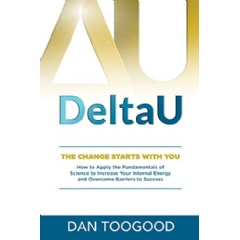“When did Prada become so expensive?” So asked users on the lifestyle platform Xiaohongshu earlier this year. When indeed? Price hikes seem sadly, inevitable. But in recent years the pace and frequency at which they have been introduced in the luxury industry are staggering.
In January 2023, Hermès will increase prices by 5 to 10 percent, while Dior, Gucci, Saint Laurent, and Richemont’s Cartier have already raised theirs again. Louis Vuitton has done it twice this year. The list goes on and on.
When it comes to China, such hikes are especially notable. At the beginning of the year, Celine raised prices for the second time in just three months — leading to it being branded “unaffordable” by Xiaohongshu users. And on that platform netizens have also been sharing stories of uplifts from Chanel: for instance, the 2.55 bag rose by $560 (4,000 RMB) in one year alone.
![]()
According to Chinese media, the Chanel 2.55 bag is priced at 75,500 RMB, up from 71,500 RMB last November.
Even more stark is the example of Chanel’s Classic Flap handbag. When Lagerfeld released his inaugural design in 1983, it was a breakout success. Granted, it’s now synonymous with the Chanel brand but does that justify a staggering 84 percent rise in the mainland in just three years? At $10,500 (75,500 RMB) it’s close to the price tag of an Hermès Birkin bag.
Local media reported this month that American jeweler Tiffany will apply adjustments to its entire line in China with estimates ranging anywhere from a staggering 20 to 59 percent, depending on collections, but these reports are unconfirmed. Amid few signs of this peaking, Jing Daily explores why this might be happening during times of war, social crisis and looming recession — and whether it’s a wise strategy in today’s biggest luxury market.
China’s online response
Firstly, this is very much on the minds of consumers. Hashtags on the topic include: “Chanel increases prices again,” with 1.44 million views; “Chanel mini CF handbag costs over 60,000 RMB for the first time, ” with 1.12 million; “Tiffany increases prices for all products” with 2.44 million; and “Hermès to notably increase prices next year” with 2.55 million. Granted, the average Weibo user is unlikely to be a luxury follower or buyer and so the common theme may be along the lines of “those who can afford them probably don’t care about the hikes anyway.”
When a short video from Jing Daily’s WeChat account on this very topic was posted on November 13, viewers expressed mixed reactions. One comment reads: “Keep increasing the price! The resale price of my ‘nano speed’ is already higher than when I bought it, so if I sell it now I can get another handbag for free.” On the other hand, others questioned the move: “Without a corresponding ‘hike’ in their design value, I don’t understand why they are so expensive,” another reader wrote.
This sentiment is echoed by Arnold Ma, founder of marketing agency Qumin, who observes that “without product innovation or big changes in China, price hikes are the easiest way for brands to create more desirability — the less people can afford it, the more it will be in demand.” Though as he points out, this sounds less like a long-term or well-thought-out strategy, and more like an attempt at creating “manufactured scarcity.”
Are luxury consumers still biting?
Regardless of undersupply or not, the mainland luxury market is buying; it accounted for approximately 21 percent of its global counterpart in 2021, up from 20 percent in 2020. According to Ma, “brands are doing this [rising prices] in China due to the increase of sales numbers in the country,” and this “sends a signal that Chinese luxury buyers are not that price sensitive.”
Additionally, “The New Faces of Chinese Luxury Shoppers” report found a surge in first-time luxury fashion consumers that was responsible for 88 percent of the Chinese luxury fashion market growth in 2021. About 50 percent of this group bought luxury fashion items (including ready-to-wear, footwear, leather goods, and accessories) for the first time between October 2020 and September 2021. That would indicate that many of these shoppers won’t be aware of previous prices. They are also much younger, as data from Xiaohongshu found, and might take figures at face value rather than remembering previously lower ones.
However, Chen Liang, managing partner of marketing consultancy éCLAIR, has concerns about solely banking on these shoppers. “These first-time purchasers are very unloyal and susceptible to social changes and trends. So it is not rare to see them shift from entry-level luxury to others at similar price levels or simply stop spending money, because of the loss and instability resulting from the pandemic.”
Liang also thinks that houses employ this strategy as they have begun to “retreat back to their high-value lines” such as leather goods and jewelry to cater to those HNWIs who actively want “more expensive items.” Hermès’ strong results in Q3 send a clear signal to shift more focus to these categories.
Cultural and consumer trends impacting the market
Meanwhile, éCLAIR has recently found a hot search word across global social media platforms (including Xiaohongshu, Instagram, Pinterest, and Tiktok): “old money style,” or 老钱风. “To understand this aesthetic, you need to look to the timeless styles of the inherited wealth of yesteryear’s most famous family dynasties, like the Kennedys, the Gettys, and the Vanderbilts,” Liang says. This trend celebrates logo-less, classic, even “quiet” luxury — with extremely high quality and craftsmanship — and is producing notable sales for names like Brunello Cucinelli, Stefano Ricci, Loro Piana, and even domestic name Icicle.
![]()
Xiaohongshu users share looks that fall under the “old money style.” Photo: Xiaohongshu
Still, the underlying question remains: are local consumers’ wallets impervious? “While strategies like this have worked very well in the past when the Chinese economy was booming and GDP growth was at double digits, I think going forward it will be counterproductive,” Ma explains. He puts this down to a number of factors including an overall decline in luxury consumption (houses like LVMH, Burberry and Richmont have all seen a drop in sales), governmental policy (Xi’s “Common Prosperity” could discourage too much luxury consumption), and a rise in nationalism (seen in the growth and maturity of local companies combined with a move away by younger shoppers from global names).
“Mix all this with the Guochao movement and the new younger luxury consumer who is less attracted by foreign heritage or big showy logos, we can see the potential outcome already,” Ma remarks. He mentions the latest report from Barclays, which shows a staggering drop of 40 percent in luxury consumption from China’s domestic market between this April and July, during major lockdowns. The market’s “underperformance” indicates that “China’s appetite might not be as high as it used to be.”
Another challenge for luxury is the country’s growing acceptance of and interest in the resale market. The younger generation faces struggles far more challenging than those of previous cohorts (the climate emergency among them) and as such, some have adopted a bleaker outlook. Faced with the sharp increase in life pressures caused by global inflation and high unemployment, young consumers have had to become savvier. The secondhand platform Plum’s latest report showed that it had 100,000 consumers participating during Double 11. In fact, Plum, also known as Hongbulin, completed $100 million (700 million RMB) in round C financing, and its income has doubled compared with last year.
The very foundations of luxury are built upon scarcity. Even in times of extreme crisis, whether it is the pandemic or the impending recession, the sector, on the whole, appeared bulletproof. As luxury expert Daniel Langer writes: “pricing mistakes — along with weak brand positioning and a deficit in luxury experience creation — are among the top shortcomings.” But could 2023 change all that? Brands that increase once too often might well find themselves in the middle of an unwanted backlash. If this happens anywhere, it will happen in China.
Note: This article have been indexed to our site. We do not claim legitimacy, ownership or copyright of any of the content above. To see the article at original source Click Here













